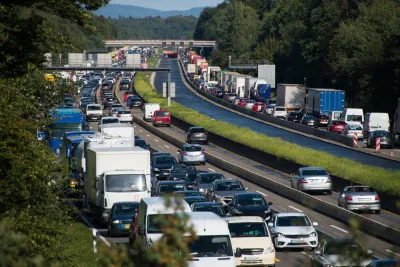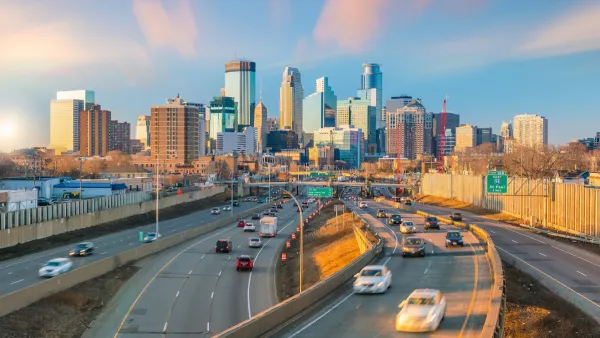If even a small fraction of workers continue to work remotely or have more flexible hours, the resulting reduction in rush hour travelers could have a significant impact on peak hour congestion.

With a third of U.S. workers in jobs that can be performed remotely, the traditional rush hour–that "uniquely awful" time of day when red brake lights know no end and "there is no good way to get around"–could be history. During the pandemic, writes Emily Badger in the New York Times, people not only worked remotely but also adjusted their work schedules to more flexible hours, flattening traffic peaks and reducing congestion. But, even as the economy reawakens and traffic starts to return, "planners, transit agencies and researchers are now considering the remarkable possibility that in many places it won’t revert to its old shape amid newfound work flexibility."
According to Badger, even a small shift in work hours could make a major difference. Because "roadway congestion is nonlinear," even "a modest number of people working from home on a Thursday" could make peak hour commutes "perceptibly less miserable." This goes for passenger comfort on public transit, too. "Until all the seats are gone, more passengers don’t affect you much. But once the aisle starts to fill up, every new body erodes your personal space and compounds chaos at the boarding door." Research has shown that "marginal changes in commute behavior on Jewish holidays, when most employers remain open but a small share of commuters stays home," create visible benefits in rush hour traffic reduction. "In Washington, D.C., compressed schedules and telework policies for federal workers had created noticeably saner traffic on Friday mornings. On the region’s Metrorail, peak ridership before the pandemic was consistently 10 percent to 15 percent lower on Fridays than midweek."
For decades, the "central paradigm of transportation planning" revolved around how to make rush hour less terrible. If we are able to ease demand at peak times, we can "consider a universe where more people don’t have to time their lives to the rhythm of rush hour — and where whole cities aren’t so preoccupied by what to do about it."
FULL STORY: A Little More Remote Work Could Change Rush Hour a Lot

Analysis: Cybertruck Fatality Rate Far Exceeds That of Ford Pinto
The Tesla Cybertruck was recalled seven times last year.

National Parks Layoffs Will Cause Communities to Lose Billions
Thousands of essential park workers were laid off this week, just before the busy spring break season.

Retro-silient?: America’s First “Eco-burb,” The Woodlands Turns 50
A master-planned community north of Houston offers lessons on green infrastructure and resilient design, but falls short of its founder’s lofty affordability and walkability goals.

Test News Post 1
This is a summary

Analysis: Cybertruck Fatality Rate Far Exceeds That of Ford Pinto
The Tesla Cybertruck was recalled seven times last year.

Test News Headline 46
Test for the image on the front page.
Urban Design for Planners 1: Software Tools
This six-course series explores essential urban design concepts using open source software and equips planners with the tools they need to participate fully in the urban design process.
Planning for Universal Design
Learn the tools for implementing Universal Design in planning regulations.
EMC Planning Group, Inc.
Planetizen
Planetizen
Mpact (formerly Rail~Volution)
Great Falls Development Authority, Inc.
HUDs Office of Policy Development and Research
NYU Wagner Graduate School of Public Service




























